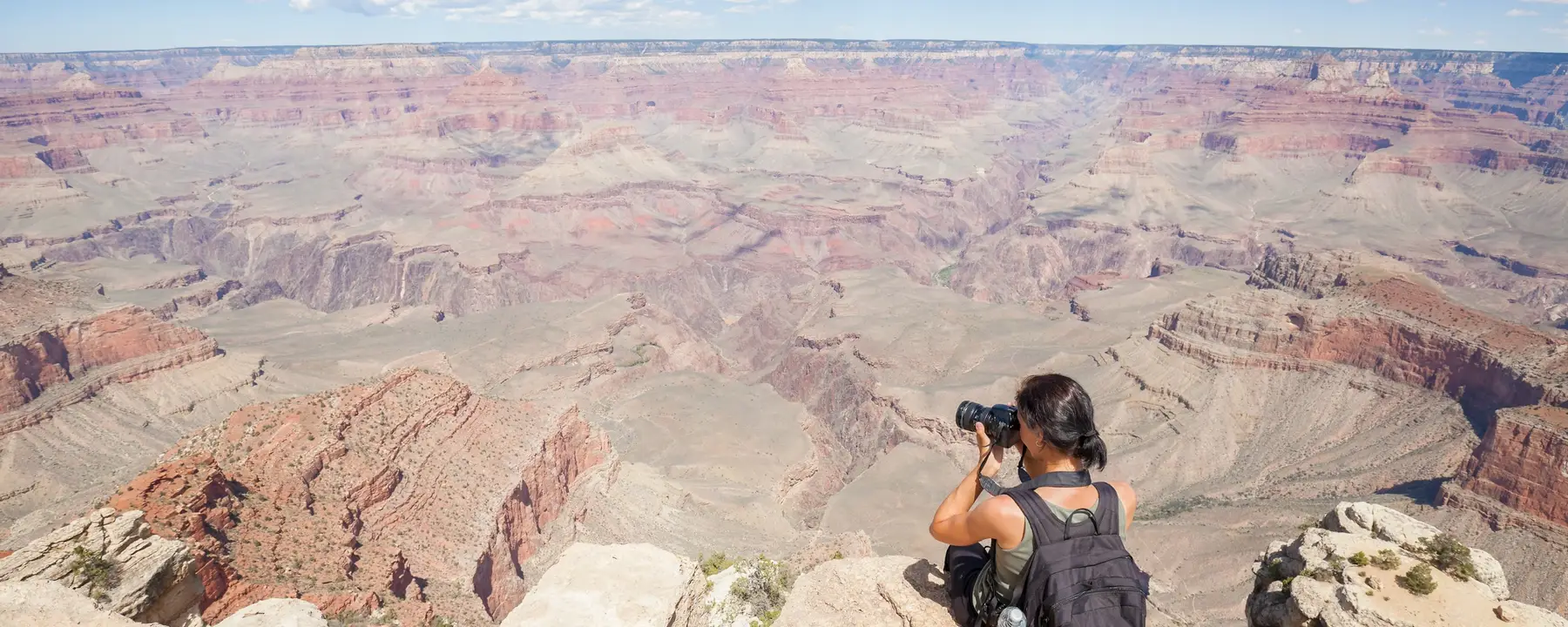Measuring the impact of air pollution on visibility in United States National Parks
There’s Something in the Air
If you stand on a hillside outside of a major city, or near a wildfire, and look over the landscape, a gray or brown haze may obscure your view. This haze is caused by small particles suspended in the air, produced by burning activities like combustion of carbon-based fuels, or from natural disasters like wildfires. Airborne particles scatter sunlight, making it harder to see through the haze. The more pollution in the area, the more particles there are in the air, and the more urban skyline or the natural beauty are obscured.
Additionally, the particles that make up the haze can impact human health. Respiratory disease, cardiovascular disease, and cancer have been linked to exposure to smaller particles (<2.5 µm diameter) in air pollutants. Researching the sources of air pollution particles requires identifying and measuring the chemicals in the haze-creating particles. Understanding the contents of the particle pollution and its sources can show whether the pollutants are increasing or decreasing over time.
Clean air and clear views are desirable everywhere, but especially in America’s national parks. Millions of people visit our parks each year, and looking out across beautiful mountains and canyons, or up at soaring cityscapes, is part of the experience. To keep the skies above national parks and other public areas as free from haze as possible, the federal government adopted the Clean Air Act of 1977 and later formed the Interagency Monitoring of Protected Visual Environments program (IMPROVE).
IMPROVE’s objective is to measure airborne particles—whether naturally occurring or from manmade sources—that can impair visibility at U.S. national parks. The program’s long-term data trends allow determination of the emission sources and give us the ability to track the movement of pollutants through the environment, which can inform future policy decisions. Since IMPROVE began in 1985, it has made an impact. For example, EPA regulations over the last two decades resulted in lower sulfur dioxide emissions, which in turn resulted in less haze formation.
Time to Clear the Air
RTI’s Analytical Science Division has measured sulfate, nitrate, and chloride in fine particulate matter (air particles <2.5 µm) in support of the IMPROVE program for over three decades. Our methods were developed in collaboration with the National Park Service based on decades of experience monitoring air quality samples for government clients and academic researchers. We use state of the art instruments to measure fine particles collected at nearly 160 national parks, wilderness areas, wildlife refuges and indigenous lands across the country. Our consistently high-quality data allows researchers to track trends in air pollutants and provides traceability of long-range emissions.
Climate change continues to threaten the environment and organisms by irreversibly altering ecosystems. Deserts have expanded, and the thread of wildfires has increased, especially in recent years. Pollutants that impact visibility are also related to climate change, and we have actively researched emerging pollutants that contribute to both. While ongoing efforts focus on measuring sulfate and nitrate, we also work with NPS to study sulfur-containing compounds at several sites in the IMPROVE network. Organosulfate chemicals have recently been found to be formed by reactions between pollutants in fine particles. Our research will measure their levels in the IMPROVE network, allowing researchers to track their concentrations over time. These results will also allow NPS researchers to understand their impact on visibility and climate change.
A Breath of Fresh Air
In addition to our impact on policy, regulation, and measurement techniques, the positive influence of the IMPROVE program is evident in the dramatic improvement in visibility documented in photos over time and preserved in the memories of visitors to U.S. national parks. The National Park Service noted that visibility in eastern parks has improved from 50 miles in 2000 to 70 miles in 2015 and in western parks from 90 to 120 miles in the same time period.
Our ongoing work with the IMPROVE Network is helping to preserve the natural beauty of the National Parks and ensure that these important national treasures will be healthy and safe for future generations.
- National Park Service (NPS)
- U.S. Environmental Protection Agency (EPA)


